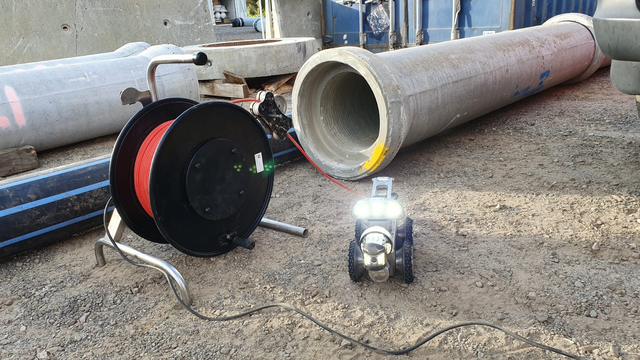Remote Visual Inspection of a Carbon-Steel Boiler: The Ultimate Case Study

The technology behind remote inspection is advancing fast. Robotic crawlers are one of the key instruments driving the change, with the tech migrating to allow effective testing options within evermore challenging environments.
The following is a case study detailing a first-of-its-kind remote visual inspection of a carbon-steel boiler, as requested by Australian electricity generator, CS Energy.
The Asset
The asset in question was a water tube boiler made of carbon steel and measuring Ø5 m in size. The company has very strict inspection requirements for its coal-fired boilers, with preliminary inspections being carried out after the assets have been operating for two years. Following the gathering of this inspection data, two years later (so four years after they’ve been in operation) a further inspection takes place and a major overhaul of the asset is implemented.
The Challenges
The greatest challenge for this inspection was to reduce the amount of time the inspection took. With costs of up to $1 million each day a boiler is out of operation, it was clear that an alternative was needed to manual inspection.
Such traditional methods required a three-day build time to erect scaffolding, followed by another two days to dismantle it after the inspection was carried out. There was also the risk and expense of human entry into the asset, something else the company was keen to avoid.
The Solution
Invert Robotics was delighted to bring their robotic crawler into action for such a task. The H2200 platform was designed for just such an inspection task and can be carried out remotely.
The areas that warranted close-up inspection within the boiler included:
- The burners
- The boiler tubes, looking for circumferential cracking
- The steel membrane between the boiler tubes
- The boiler nose
- Damage to pendant superheaters
- Any ash build-up throughout
The crawler was deployed and was able to provide superior inspection data that satisfied all the requirements. The advantages of such an inspection were many, including:
- The asset was only offline for a matter of hours, rather than the days required for a traditional inspection
- There was no need for human entry into the asset
- The data gathered was superior to that gained by human hand. This is the result of easy access, consistent and easy-to-reproduce readings and image quality, plus the removal of natural human error
- Reduced insurance costs for the testing procedure
- Increased health and safety that benefits the company, employees and shareholders
- Dramatically reducing the cost of the testing process
It also increases the ability for more proactive maintenance, allowing the company to plan for additional inspections and schedule necessary overhauls and repairs. This sentiment was echoed by Dr Chris Spero of CS Energy who approached Invert Robotics to carry out the task:
“The robotic inspection was completed during a mini shutdown of the boiler. The acquired data will help the CS Energy team to further streamline their work repair schedule.’
Contact us to find out more about the H2200 Robotic Crawler or any of our other custom solutions, or request a quote online.
Carry on reading Is Proactive NDT Inspection the Key to Great Asset Management? to find out more.
